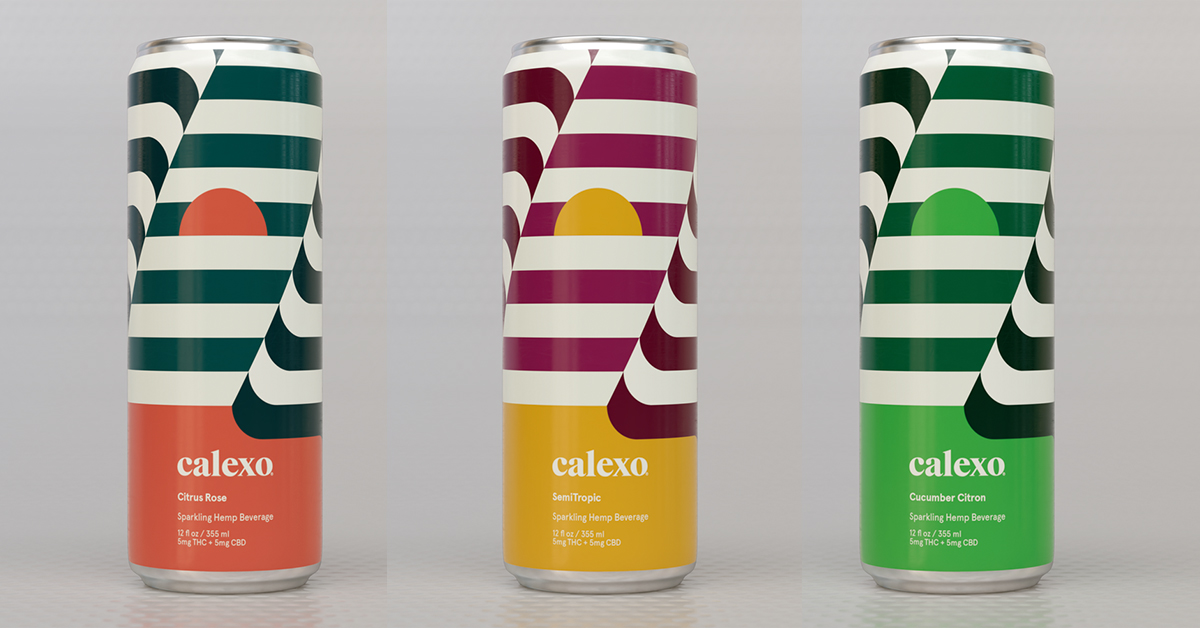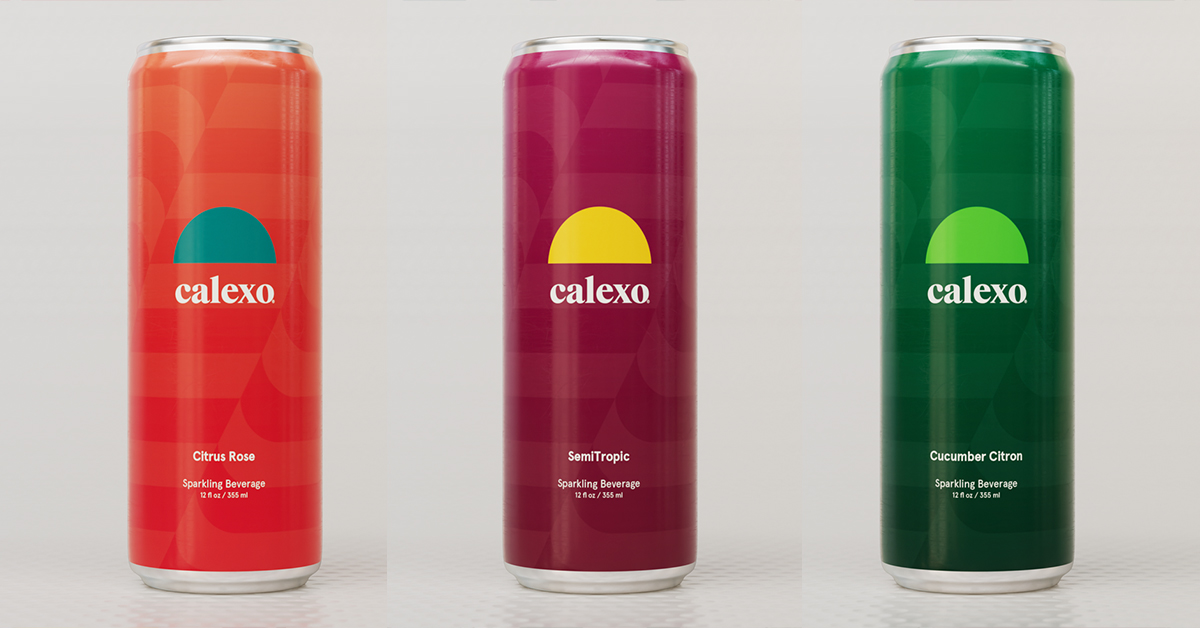Nearly five years since its launch as a cannabis cocktail company, Calexo believes it has finally found the right recipe to succeed in the THC drinks space. The critical step? Dropping cannabis.
The California-based company has iterated its flagship product and flavors with nearly every production run, including format changes and slight formula tweaks, but this time it has innovated in two totally new directions.
Inspired by the success of Minnesota’s hemp-derived THC food and beverage industry over the past year, Calexo relaunched in September with its own hemp-derived THC sparkling cocktail containing 5 mg of THC and 5 mg CBD and available in Citrus Rose, Cucumber Citron and SemiTropical flavors. The company also launched a complementary sparkling line with the same taste profiles but without the inebriating ingredients.
This dual approach offers a new take on a popular strategy employed by cannabis beverage players like Cann and Cycling Frog to boost brand awareness while they wait for regulation to open up and allow the market to grow. But Calexo’s portfolio approach can get product on grocery store shelves even sooner; co-founder and COO Ken Pelletier, said the status switch from a cannabis company to hemp allows Calexo to build in a space with a clear path to “grow into the robustness of a traditional CPG” company.
CBD beverage brand Recess took a similar approach in 2021 with the launch of its Mood line; that product has since become Recess’ primary growth driver alongside its newer mocktail positioned product line. Other CBD beverage brewers like Vybes, Weller and Sati Soda have also made similar moves.
The Path To Cannabis Free
Although the cannabis beverage space was still nascent when Calexo launched in 2018, Pelletier said the team assumed that it would eventually evolve into a category resembling a typical CPG industry – “that didn’t necessarily happen at the pace we were thinking,” he said.
“When we recognized the real struggle in the cannabis space, it was from a California perspective, but you could find local versions of the same story in a lot of different states across the country,” said Pelletier.
The widespread limitations on manufacturing, distribution, sales and marketing operations for cannabis companies contributed to the product line pivot. But developments in Minnesota soon proved equally influential.
Minnesota’s hemp-derived THC beverage market began gaining momentum late last year and the state’s many craft brewers spearheaded the creation, distribution and sales of this new legalized product. It also served as a case study for selling THC-infused beverages in unregulated spaces including grocery, c-stores, and even farmers markets.
But getting high was more of an added bonus for Calexo’s fans, Pelletier explained, with flavor rather than THC being a primary purchase driver. That meant changing the source ingredient was unlikely to alienate its audience and could allow Calexo to remove regulatory restrictions up and down its supply chain.
Pelletier said moving into the hemp space opened the business to using established manufacturing and warehousing options (versus the two it was legally allowed to use as a California cannabis company). The pivot also removed restrictions on how it could build its e-commerce platform, and finally provided the company’s CFO, Aiko Oshima, with the ability to manage the business with industry-standardized practices like operating expense write-offs and electronic payments for distributors versus cash that was previously required due to banking restrictions.
“The success stories that you see in cannabis do probably come a lot from PR [or] from being over-capitalized at the early stages,” said Pelletier. “Ultimately they are all having the issue now in [stores] – how do you convince somebody to drive to a dispensary to buy beverages when they’ve already done all their grocery shopping somewhere else?”
A Look At On Shelf Dynamics
Launching an un-infused line gives the brand a second revenue stream and alternate solution to that challenge. In channels like national grocery, many retailers still don’t sell hemp-derived THC brews. When possible, Calexo is planning to have the infused product slotted as a non-alcoholic cocktail and in cases that is not permitted, the Sparkling Line will sit in its place.
Both products contain 40 to 50 calories per 12 oz. can; the hemp-infused line is priced at $5 per can while the sparkling option sells for $3.75. Pelletier said the company has sold pallets of both product lines to its new distributor partners and will be showing up in “national retailers shortly.” Calexo’s two lines are produced at the same co-packer – a brewery that “happens to have a tunnel pasteurizer” – and the team already has a larger partner locked in for when its order sizes increase.
Selling two products with the same taste profiles and similar positions could lead to consumer confusion, but that’s a challenge the company’s co-founding team – which includes three individuals who’s day jobs center around design and creative art fields – had the in-house capacity to tackle.
The infused cans feature an abstract, optical pattern while the un-infused beverages are wrapped in a single, flavor-related color and showcase the same pattern, but muted in the background. Pelletier said Calexo aims to air on the side of “verbosity,” consumer education and simplicity.
“The pattern is designed to be a warning label in of itself because it includes this weird shift at the edges where it rounds and depending on how you look at it, it could be going up or it could be going down. That optical art for the main packaging was an intentional choice to signal – this is a product that gives you an altered experience.”


